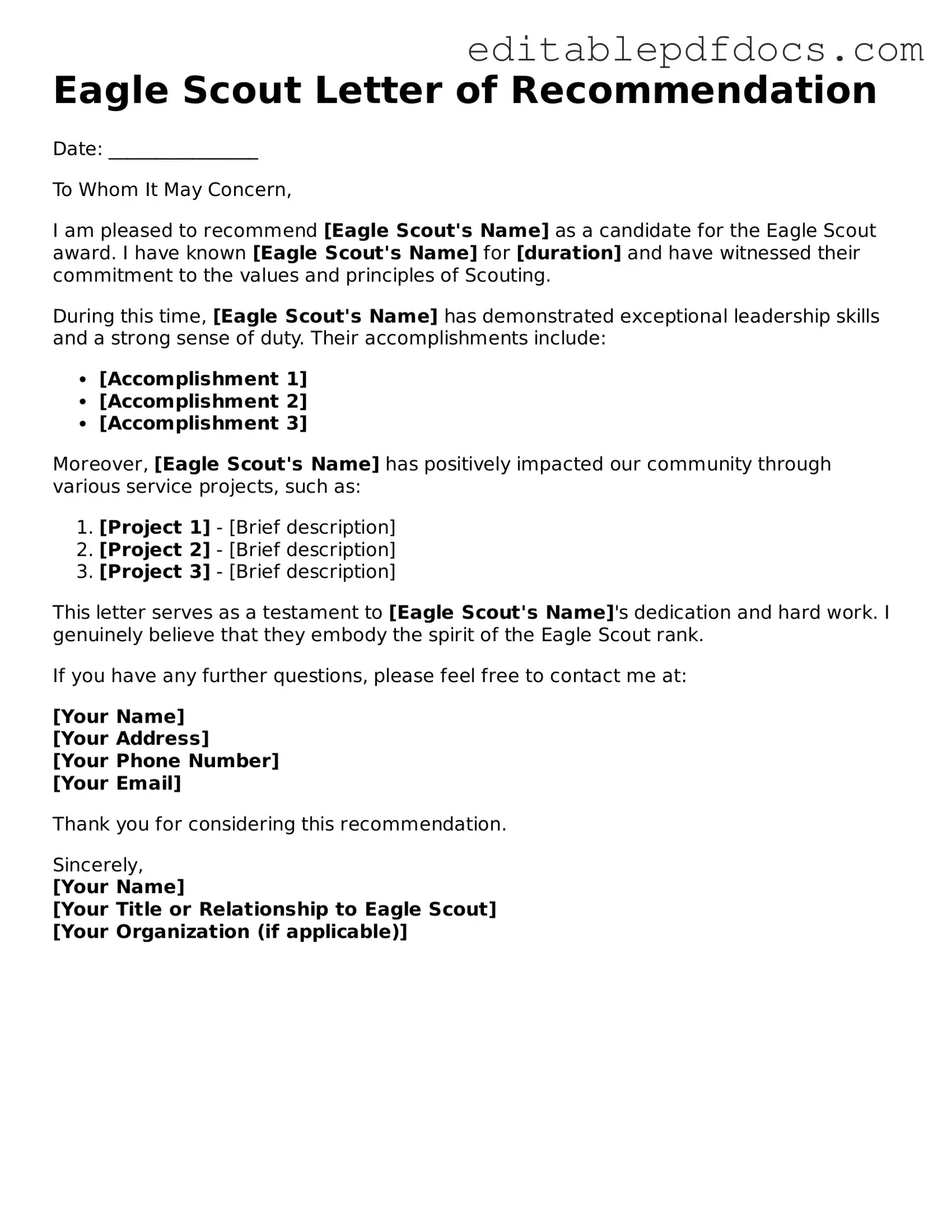When completing the Eagle Scout Letter of Recommendation form, many individuals make common mistakes that can hinder the process. One frequent error is failing to provide specific examples of the candidate's leadership skills. Instead of general statements, it is helpful to include concrete instances where the scout demonstrated responsibility and initiative.
Another mistake is overlooking the importance of the recommendation's tone. A letter that lacks enthusiasm or appears half-hearted may not reflect well on the candidate. It is essential to convey genuine support and belief in the scout’s abilities and character.
Some people forget to follow the instructions regarding length and format. Each recommendation should adhere to the specified guidelines to ensure it meets the requirements. Submitting a letter that is too short or does not follow the recommended structure can detract from its effectiveness.
Additionally, not providing contact information is a common oversight. Including a phone number or email address allows the review board to reach out for further clarification or questions. This can be crucial if they need to verify any details mentioned in the letter.
Another mistake involves vague language. Phrases like "he is a good kid" do not provide much insight. Instead, using descriptive language that highlights the scout’s achievements and qualities will strengthen the recommendation.
People sometimes also forget to proofread their letters. Spelling and grammatical errors can undermine the professionalism of the recommendation. Taking the time to review the letter ensures clarity and demonstrates attention to detail.
Moreover, some recommenders may not be aware of the importance of timeliness. Submitting the letter late can delay the candidate’s progress toward achieving Eagle Scout status. It is important to be mindful of deadlines and submit the letter as soon as possible.
Another common mistake is not tailoring the letter to the specific scout. Using a generic template without personal touches can make the recommendation feel impersonal. Each scout has unique qualities, and highlighting those can make a significant difference.
Lastly, failing to express the impact the scout has had on the community is a missed opportunity. Recommendations that include how the scout has contributed to others or made a difference in their troop or community can provide valuable context and strengthen the case for their Eagle Scout candidacy.
